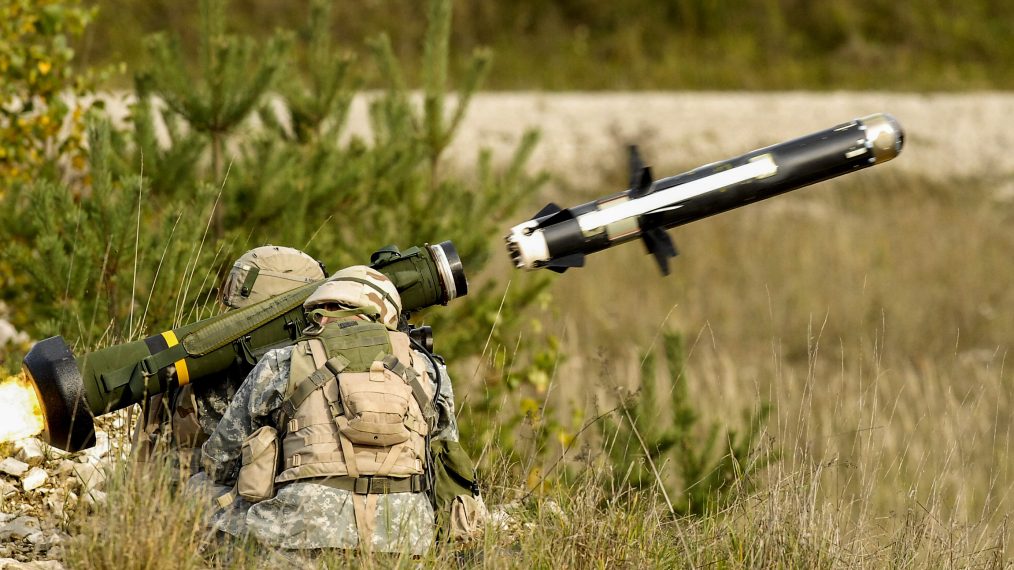
Javelin: The Versatile Anti-Tank Weapon Revolutionizing Modern Warfare
The Javelin missile system has become one of the most effective and versatile anti-tank weapons in modern warfare. Developed by the United States, the Javelin is known for its ease of use, precision targeting, and lethality against armoured vehicles. Since its introduction in the 1990s, the Javelin has been widely adopted by various military forces around the world and has proven itself in numerous conflicts.
The FGM-148 Javelin was developed as a successor to the M47 Dragon, which had limitations in range, accuracy, and lethality. The Javelin was a product of a collaboration between Raytheon and Lockheed Martin, combining advanced technology to create a portable, shoulder-fired missile system capable of defeating modern tanks.
One of the Javelin’s key features is its fire-and-forget capability. Unlike earlier systems that required the operator to maintain a line of sight with the target until impact, the Javelin allows the user to fire the missile and immediately seek cover, enhancing their survivability on the battlefield. The missile’s guidance system, equipped with infrared imaging, autonomously tracks and homes in on the target after launch.
The Javelin missile system consists of two main components: the Command Launch Unit (CLU) and the missile itself. The CLU, which weighs about 6.4 kg (14 lbs), is the targeting and launching component that houses the infrared imaging system, a day sight, and controls. The missile, stored in a disposable launch tube, weighs approximately 15.9 kg (35 lbs) and is equipped with a tandem-shaped charge warhead designed to defeat reactive armour.
When preparing to fire, the operator uses the CLU to locate and lock onto the target. Once the missile is launched, it ascends in a curved trajectory before diving down onto the target from above, where the armour is typically thinner. This top-attack mode is particularly effective against tanks and armoured vehicles. The Javelin can also be fired in direct-attack mode for engaging bunkers, buildings, and helicopters.
Since its introduction, the Javelin has been used in numerous conflicts, demonstrating its effectiveness against a wide range of targets. The system was first deployed in 1996 by U.S. forces, and it saw extensive use during the Iraq War and the War in Afghanistan. In these conflicts, the Javelin proved highly effective not only against tanks but also against fortified positions, light vehicles, and even personnel in cover.
The Javelin has been exported to several countries and used by various military forces. It gained significant attention during the 2022 Russian invasion of Ukraine, where Ukrainian forces used Javelins to devastating effect against Russian armoured columns. The success of the Javelin in this conflict has further solidified its reputation as a game-changing weapon system.
The Javelin’s portability, ease of use, and fire-and-forget capability make it a highly versatile weapon on the battlefield. Its ability to engage targets at ranges up to 2.5 km (1.5 miles) and its effectiveness in both top-attack and direct-attack modes give it a significant tactical advantage over earlier anti-tank systems.
However, the Javelin is not without its limitations. The high cost of each missile, which can exceed $175,000, makes it an expensive option, especially when used against lower-value targets. Additionally, while the system is highly effective in open terrain, its performance can be reduced in urban environments where obstacles can interfere with the missile’s flight path.
The Javelin anti-tank weapon system represents a significant leap forward in military technology, providing ground forces with a reliable and effective tool for neutralizing armoured threats. Its proven track record in multiple conflicts has made it a staple of modern arsenals, and its continued development and deployment ensure that it will remain a key asset in future warfare.




